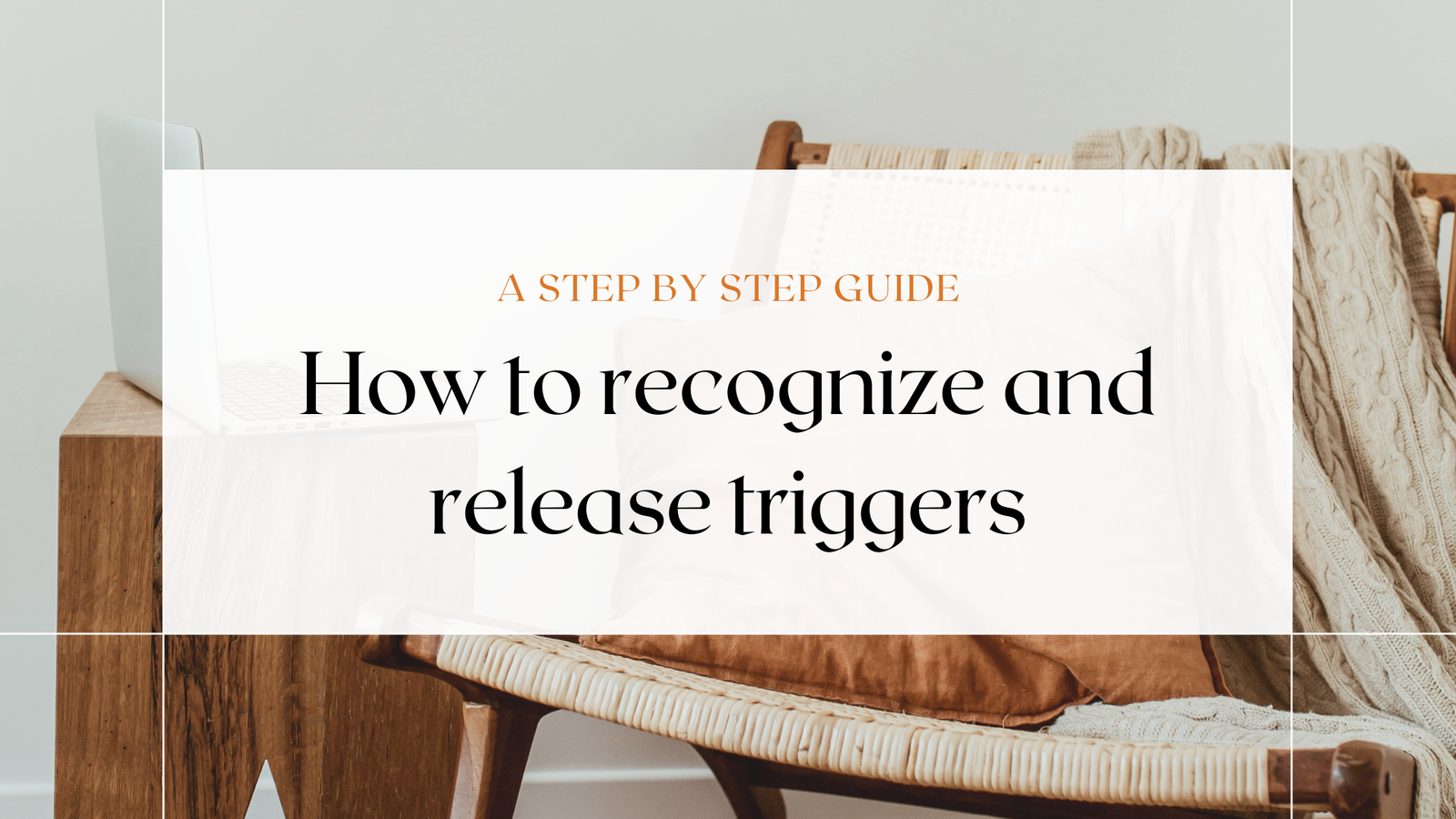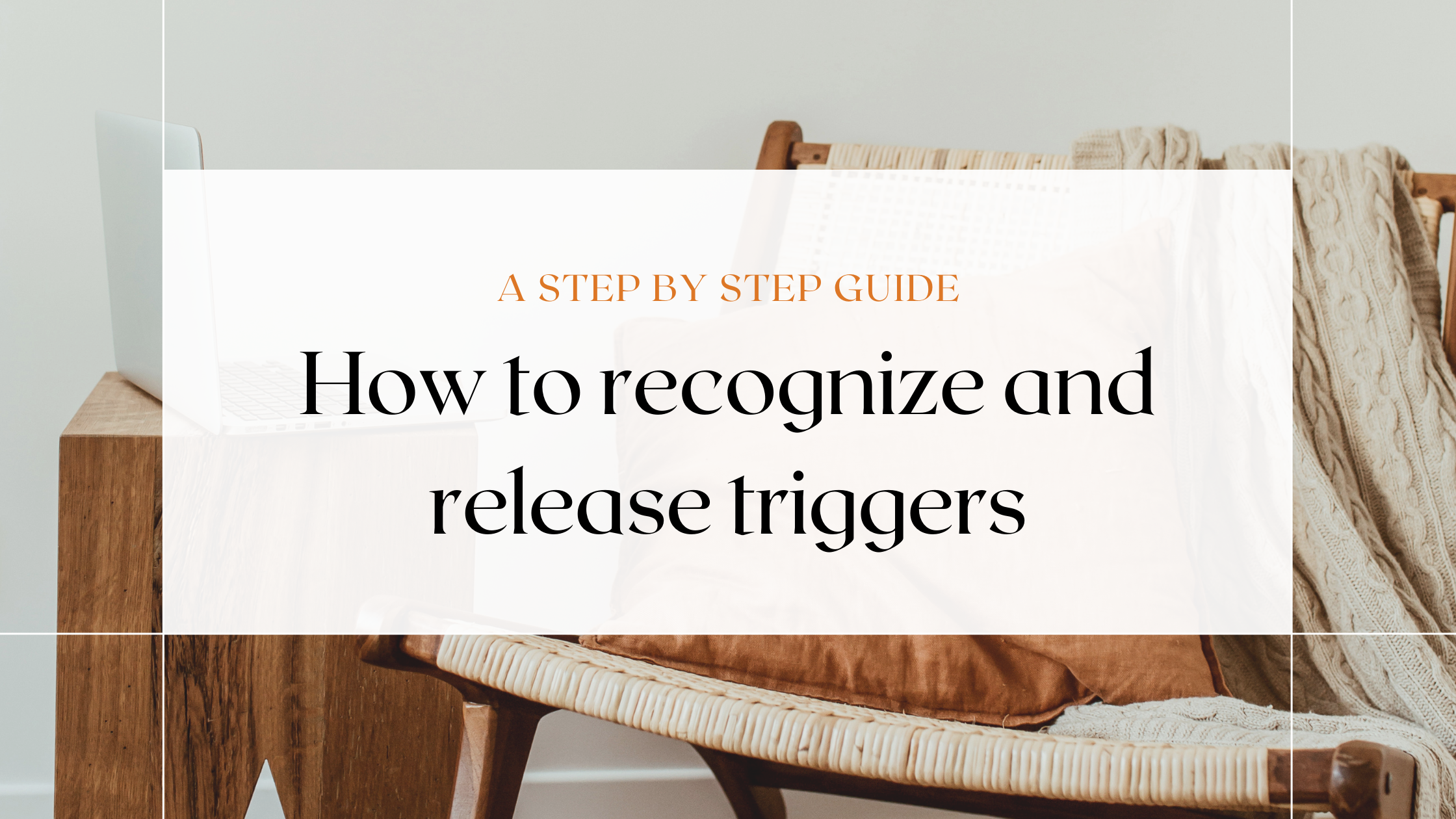How to Recognize and Release Triggers: A Step-by-Step Guide

Have you ever found yourself spiraling after something that, on the surface, seemed small?
A comment from a coworker. A sigh from your partner. A moment where you felt ignored, misunderstood, or not enough.
You know you’re reacting more strongly than the situation calls for—but you can’t stop it.
That’s a trigger. And it’s not a flaw. It’s a message.
Most of the time, we’re not reacting to what’s in front of us—we’re reacting to what it reminds us of.
Old pain. A belief we picked up somewhere along the way. A version of us that learned to hide, please, prove, or shut down to feel safe.
The key to lasting change isn’t forcing yourself to “calm down” or “be positive.” It’s learning how to meet the trigger with awareness and compassion.
In this post, I’ll walk you through the exact process I use when I feel emotionally triggered—one that’s helped me move from unconscious patterns to intentional, grounded responses. Not perfectly. But gently, and with practice.
What Are Emotional Triggers (and Why They Matter)
An emotional trigger is simply your nervous system saying:
Something here feels unsafe.
That’s it. It’s a protective response, not a personal failure.
But unless we pause and become aware of what’s happening underneath, we’ll keep reacting in the same ways—because that’s what our body knows.
The goal isn’t to never be triggered again. It’s to recognize when it happens, understand what it’s really about, and slowly rewrite the story.
This is how we heal emotional patterns and feel safe enough to choose new beliefs.

5 Subtle Signs You’ve Been Triggered
If you’re new to this kind of work, it helps to recognize the early signs of a trigger:
-> You suddenly feel small, defensive, or like you need to prove something
-> Your heart rate increases or your stomach tightens for “no reason”
-> You freeze or avoid confrontation
-> You replay the situation in your head for hours
-> You think things like “I’m not good enough” or “They don’t care about me”
These signs are often overlooked—but becoming aware of them is the first step in emotional healing.
The 4-Step Trigger Release Practice
This is the method I use in my own life and share through Affirmation Journey. It blends nervous system regulation, journaling, inner child reparenting, and release techniques—all in a simple, mindful flow.
Step 1: Recognize When You’re Emotionally Triggered
The most important part is noticing the trigger in the moment. That pause creates space for a new response.
Ask yourself:
-> What am I feeling right now?
-> Where in my body I feel this emotion?
-> Can I allow myself to have this emotion without trying to change it?
-> Can I give myself what I need in this moment to feel seen?
Maybe that means pausing to breathe, stepping away for a moment, or getting a hug from someone safe.
Being seen doesn’t always mean by someone else—it can also mean letting yourself witness what’s happening with honesty and kindness.
Self-regulation tools: breath, grounding, gentle movement, or a comforting hug. These help your nervous system feel safe again.
Step 2: Reflect on the Triggering Situation
Once you feel more grounded, write down what happened. This brings subconscious beliefs into the light.
Ask:
-
What happened?
-
What were the thoughts running through my head?
-
What emotions came up as I thought those things?
- How would I normally react in this situation?
The goal isn’t to analyze or fix—just to make the unconscious conscious.
Step 3: Inner Child Reparenting through Journaling
This is where we gently change the internal narrative. Speak to the part of you that reacted.
Ask:
• What if there’s another way?
• What do I want to believe instead?
• How do I want to feel?
• How do I want to respond next time?
Then—rehearse it.
Yes, really.
Close your eyes and imagine yourself responding differently next time.
This tells your brain and body: we’re safe now and helps create new neural pathways.
Step 4: Release the Emotional Energy
Once you’ve acknowledged, reflected, and reparented… it’s time to let go.
You can use whatever tool works best for you:
-
The Sedona Method (ask: Could I let this go?, Would I let this go?, When? Keep asking until the natural answers are Yes and Now)
-
EFT tapping to move energy through the body
-
A few minutes of breathwork to calm and clear
-
Movement, like shaking or stretching, to release the physical tension
The goal isn’t to push the feeling away, but to let it pass through.
Your body knows how to do that, if you give it the space.

Why Awareness Is the Most Important Step
Sometimes you’ll do the whole process. Other times, you’ll just notice you’re triggered and nothing else will be possible—and that’s okay.
Awareness alone is transformation.
Because once you see the pattern, you can’t unsee it.
And over time, that awareness builds space.
Space to pause.
Space to say, “I need a moment.”
Space to breathe instead of react.
That’s where everything begins.
Start Practicing This With Support
If you’re ready to explore this kind of work more consistently, I created something for you:
The 7-Day Back to You Challenge is a free, gentle guide to reconnecting with yourself through journaling, reflection, and affirmations that feel safe and true.
Join the free challenge here →

It’s designed for moments just like this—when you’re ready to come back to yourself without pressure.
You don’t have to do it perfectly. You just have to be willing to notice.
That’s the beginning. And it’s more than enough.
With care,
Andreea











Leave a comment